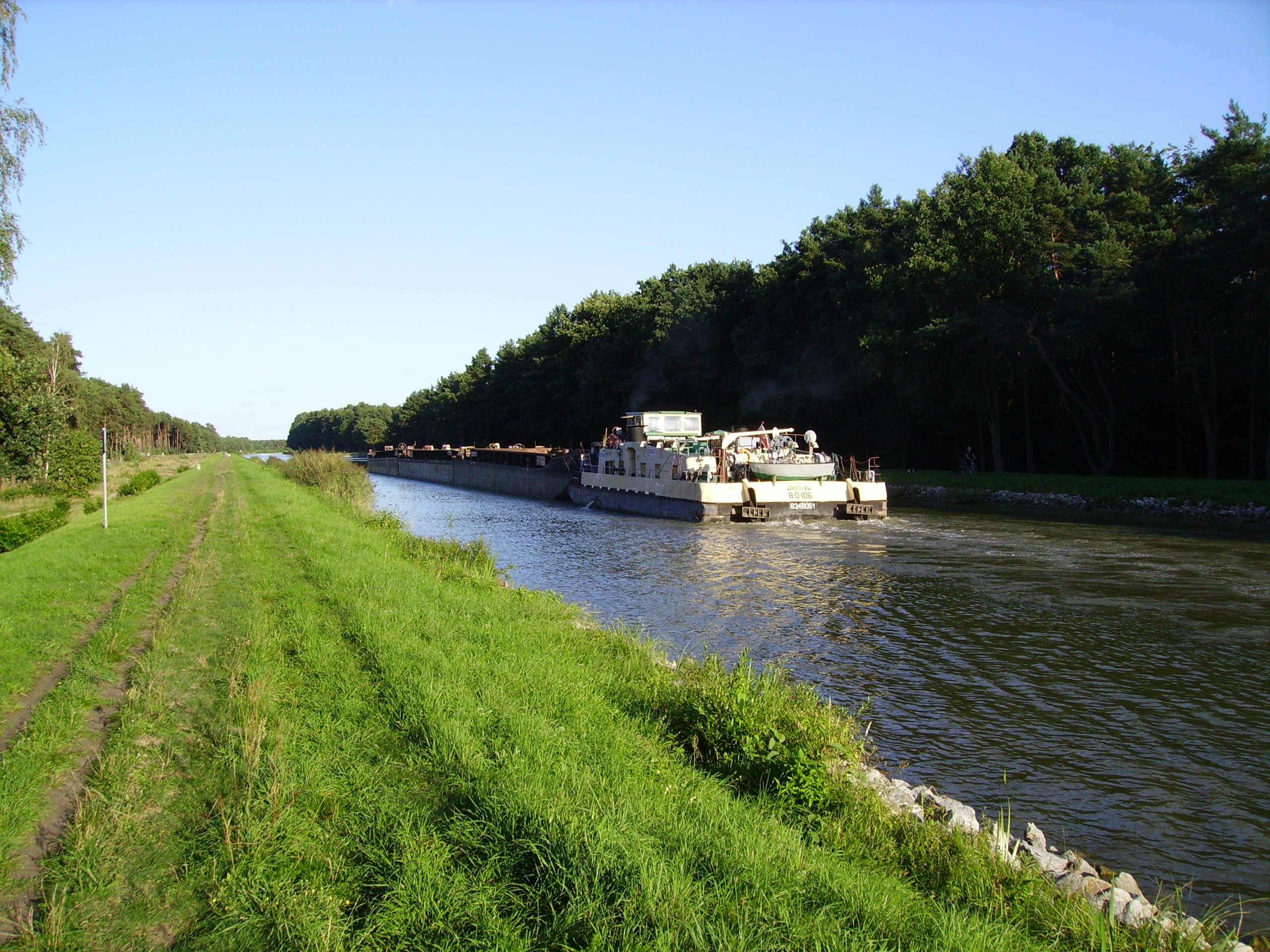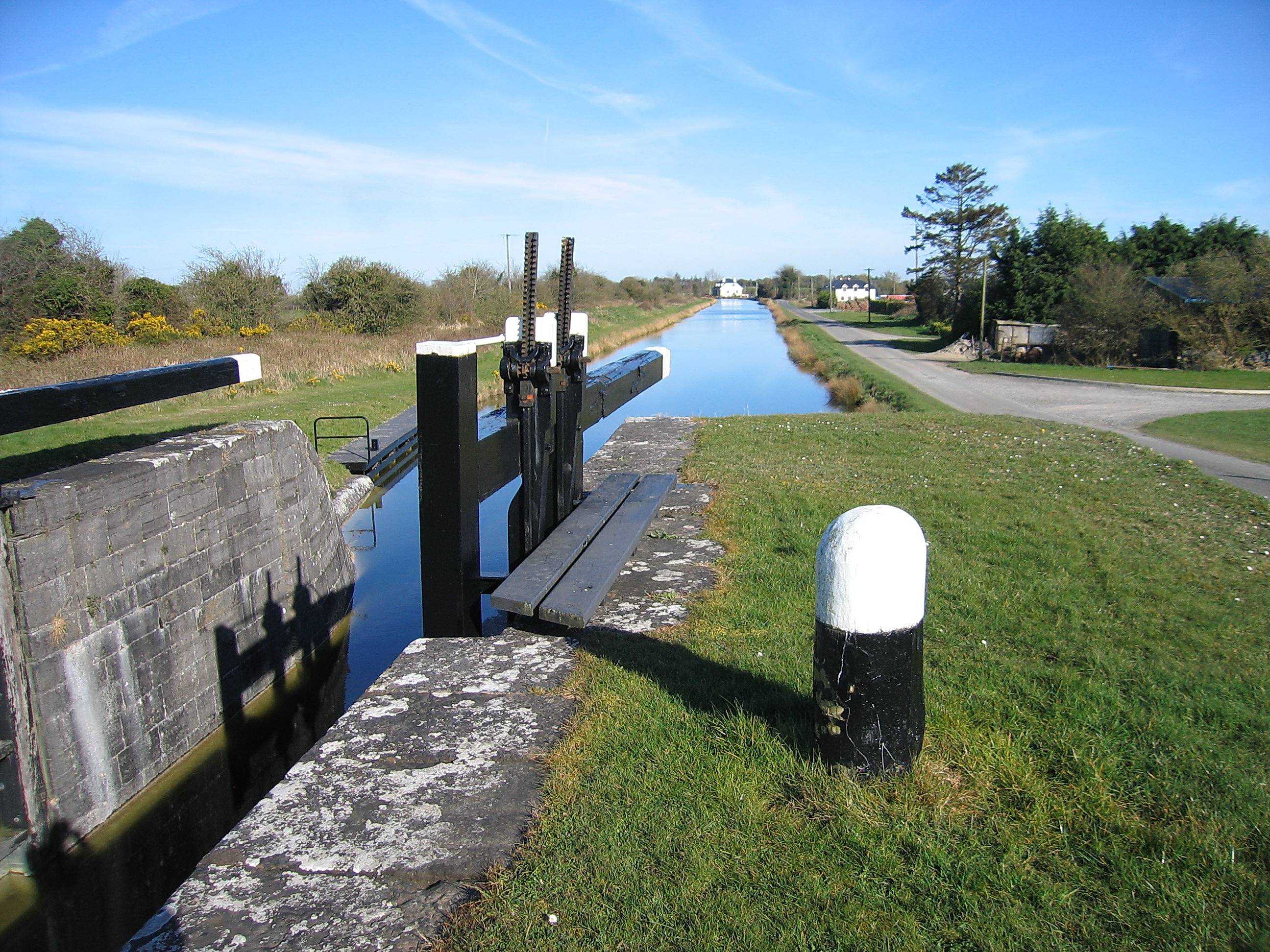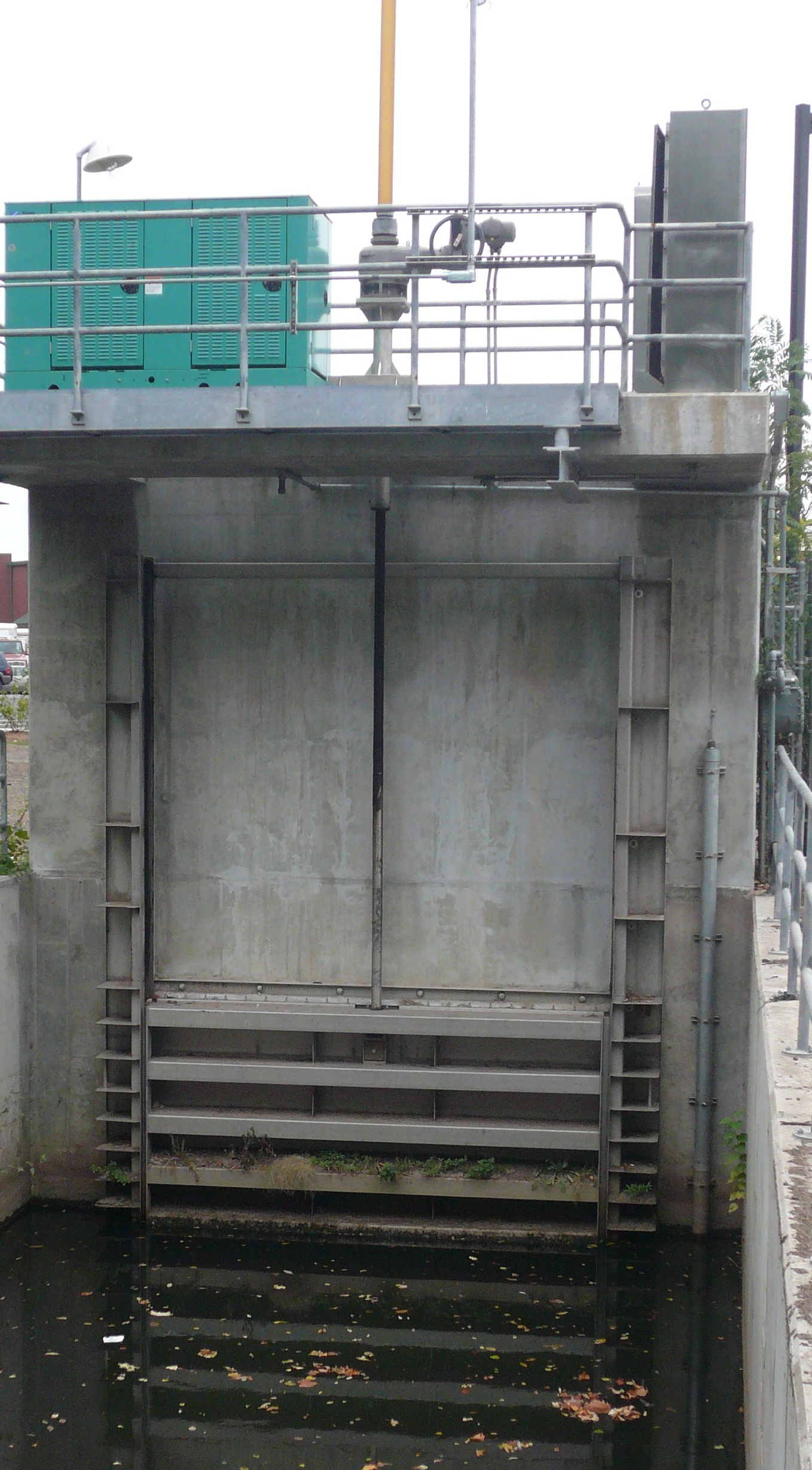|
Havel–Oder–Wasserstraße
The Havel–Oder–Wasserstraße (HOW) is a navigable waterway connecting Berlin (Havel and Spree (river), Spree) and the Germany–Poland border, German-Polish border at the West Oder, West Oder River at Friedrichsthal north of Schwedt. Approximately 135 km long, it is composed of the following sections: * Havel-, Scheital-, Oderhaltung and the Hohensaaten-Friedrichsthaler Wasserstraße (HFW), which are connected by the Lehnitz Sluice, lock, * the ship's lift Niederfinow and * the West Schleuse Hohensaaten. The route between the Havel and Lehnitz lock and the peak position are together called Oder–Havel Canal, Oder-Havel-Kanal for the Oderhaltung (Wriezener Alte Oder) section of the river, also known as the Oderberger Gewässer. The German-Polish border forms part of the west or north Mescherin (enlargement of the total length by about 14 km) and the Berlin-Spandau shipping canal, the Berlin Westhafen on a short route with the Havelhaltung (by Spandau lock above the Sp ... [...More Info...] [...Related Items...] OR: [Wikipedia] [Google] [Baidu] |
Havel
The Havel () is a river in northeastern Germany, flowing through the States of Germany, states of Mecklenburg-Vorpommern, Brandenburg, Berlin and Saxony-Anhalt. The long Havel is a right tributary of the Elbe. However, the direct distance from its source to its mouth is only . For much of its length, the Havel is navigable; it provides an important link in the waterway connections between the east and west of Germany, as well as beyond. Source The source of the Havel is located in the Mecklenburg Lake District, between Lake Müritz and the city of Neubrandenburg. There is no obvious visible source in the form of a spring, but the river originates in the lakes in the Diekenbruch near Ankershagen, close to and south-east of the Drainage divide, watershed between the North and Baltic seas. From there the river initially flows southward, eventually joining the Elbe, which in turn flows into the North Sea. Every river north-east of it flows to the Baltic Sea. The river enters Brande ... [...More Info...] [...Related Items...] OR: [Wikipedia] [Google] [Baidu] |
Oder–Havel Canal
The Oder–Havel Canal is a German canal built between 1908 and 1914, originally known as the Hohenzollern Canal, mostly replacing the Finow Canal. Together with Hohensaaten-Friedrichsthaler Wasserstraße, the ''Oderhaltung'' and the ''Schwedter Querfahrt'' it forms the ''Havel-Oder-Wasserstraße''. It runs from the town of Cedynia near the city of Szczecin on the Oder River between Germany and Poland to the Havel, a tributary of the Elbe, near Berlin. It is long, and wide. In 1934 a ship lift was built on the canal, near Niederfinow. It vertical lift was . The dimensions of the caisson are 85 x 12 x 2.5 m. It could lift vessels of up to 1000 tonnes displacement. History The assumed start of the actual Oder–Havel Canal is the current mouth of the Oranienburger Havel. It leads through the Lehnitzsee, which previously did not belong to the Havel, and reaches the Lehnitzschleuse. Most of the canal follows the former Malz Canal and then replaces the older Finow Canal up to ... [...More Info...] [...Related Items...] OR: [Wikipedia] [Google] [Baidu] |
Waterways In Germany
A waterway is any navigable body of water. Broad distinctions are useful to avoid ambiguity, and disambiguation will be of varying importance depending on the nuance of the equivalent word in other ways. A first distinction is necessary between maritime shipping routes and waterways used by inland water craft. Maritime shipping routes cross oceans and seas, and some lakes, where navigability is assumed, and no engineering is required, except to provide the draft for deep-sea shipping to approach seaports (channels), or to provide a short cut across an isthmus; this is the function of ship canals. Dredged channels in the sea are not usually described as waterways. There is an exception to this initial distinction, essentially for legal purposes, see under international waters. Where seaports are located inland, they are approached through a waterway that could be termed "inland" but in practice is generally referred to as a "maritime waterway" (examples Seine Maritime, Loire M ... [...More Info...] [...Related Items...] OR: [Wikipedia] [Google] [Baidu] |
Federal Waterways In Germany
Federal or foederal (archaic) may refer to: Politics General *Federal monarchy, a federation of monarchies *Federation, or ''Federal state'' (federal system), a type of government characterized by both a central (federal) government and states or regional governments that are partially self-governing; a union of states *Federal republic, a federation which is a republic *Federalism, a political philosophy *Federalist, a political belief or member of a political grouping * Federalization, implementation of federalism Particular governments *Government of Argentina *Government of Australia *Federal government of Brazil *Government of Canada *Cabinet of Germany *Federal government of Iraq *Government of India *Federal government of Mexico *Federal government of Nigeria *Government of Pakistan *Government of the Philippines *Government of Russia *Government of South Africa *Federal government of the United States **United States federal law **United States federal courts *Federal gove ... [...More Info...] [...Related Items...] OR: [Wikipedia] [Google] [Baidu] |
Canals In Brandenburg
Canals or artificial waterways are waterways or engineered channels built for drainage management (e.g. flood control and irrigation) or for conveyancing water transport vehicles (e.g. water taxi). They carry free, calm surface flow under atmospheric pressure, and can be thought of as artificial rivers. In most cases, a canal has a series of dams and locks that create reservoirs of low speed current flow. These reservoirs are referred to as ''slack water levels'', often just called ''levels''. A canal can be called a navigation canal when it parallels a natural river and shares part of the latter's discharges and drainage basin, and leverages its resources by building dams and locks to increase and lengthen its stretches of slack water levels while staying in its valley. A canal can cut across a drainage divide atop a ridge, generally requiring an external water source above the highest elevation. The best-known example of such a canal is the Panama Canal. Many cana ... [...More Info...] [...Related Items...] OR: [Wikipedia] [Google] [Baidu] |
Canals In Germany
Canals or artificial waterways are waterways or engineered channels built for drainage management (e.g. flood control and irrigation) or for conveyancing water transport vehicles (e.g. water taxi). They carry free, calm surface flow under atmospheric pressure, and can be thought of as artificial rivers. In most cases, a canal has a series of dams and lock (water transport), locks that create reservoirs of low speed current flow. These reservoirs are referred to as ''slack water levels'', often just called ''levels''. A canal can be called a navigation canal when it parallels a natural river and shares part of the latter's discharge (hydrology), discharges and drainage basin, and leverages its resources by building dams and locks to increase and lengthen its stretches of slack water levels while staying in its valley. A canal can cut across a drainage divide atop a ridge, generally requiring an external water source above the highest elevation. The best-known example o ... [...More Info...] [...Related Items...] OR: [Wikipedia] [Google] [Baidu] |
Spandau
Spandau () is the westernmost of the 12 boroughs of Berlin, boroughs () of Berlin, situated at the confluence (geography), confluence of the Havel and Spree (river), Spree rivers and extending along the western bank of the Havel. It is the smallest borough by population, but the fourth largest by land area. Overview Modern industries in Spandau include metalworking, and chemical and electrical factories. BMW Motorrad's Spandau factory made all BMW's motorcycles from 1969 until final assembly plants were added in Rayong, Thailand, in 2000, and Manaus, Brazil, in 2016. , Spandau's seat of government, was built in 1913. Other landmarks include the Renaissance-era Spandau Citadel, the 1848 St. Marien am Behnitz Catholic church designed by August Soller, and Spandau arsenal. That arsenal's MG 08, Spandau machine gun inspired the slang ''Spandau Ballet'' to describe dying soldiers on barbed wire during the First World War, and later was applied to the appearance of Nazi war criminals a ... [...More Info...] [...Related Items...] OR: [Wikipedia] [Google] [Baidu] |
Oderberg
Oderberg () is a town in the district of Barnim, in Brandenburg in northeastern Germany. It is situated 16 km east of Eberswalde, and 27 km southwest of Schwedt, close to the border with Poland, and in close vicinity of Berlin. Overview The territory has many lakes, remnants from the ice age. The area is widely used for outdoor recreation, such as biking, walking and boating. As Biosphere region it is home to many species of wildlife. Oderberg is closest to the Oder river crossing leading directly to Cedynia, Poland. History A Slavs, Slavic tribal territory in the early medieval period, it was conquered by Henry the Fowler in . The Slavs regained independence from the Saxons during the Slavic revolt of 983. Afterwards the area was conquered by Polish rulers Bolesław I the Brave and Bolesław III Wrymouth. In 1319, the town was captured by Henry II, Lord of Mecklenburg. In 1320, it was captured by the Duchy of Pomerania, however, it was eventually lost by Pomerania ... [...More Info...] [...Related Items...] OR: [Wikipedia] [Google] [Baidu] |
Sluice
A sluice ( ) is a water channel containing a sluice gate, a type of lock to manage the water flow and water level. There are various types of sluice gates, including flap sluice gates and fan gates. Different depths are calculated when design sluice gates. Sluices are used for channeling water toward a water mill, including for transporting logs from steep hillsides. Different terms are used regionally for sluices; the terms ''sluice'', ''sluice gate'', ''knife gate'', and ''slide gate'' are used interchangeably in the water and wastewater control industry. Etymology The term "sluice" originates from the Middle English word scluse, which derived from the Old French escluse (modern French: écluse). This, in turn, came from the Late Latin exclusa, a shortening of aqua exclusa, meaning "excluded water" or "a shut-off water channel." The Latin exclusa is the feminine past participle of excludere ("to shut out, exclude"), from *ex-* ("out") and claudere ("to close"). Regional ... [...More Info...] [...Related Items...] OR: [Wikipedia] [Google] [Baidu] |
Berlin
Berlin ( ; ) is the Capital of Germany, capital and largest city of Germany, by both area and List of cities in Germany by population, population. With 3.7 million inhabitants, it has the List of cities in the European Union by population within city limits, highest population within its city limits of any city in the European Union. The city is also one of the states of Germany, being the List of German states by area, third smallest state in the country by area. Berlin is surrounded by the state of Brandenburg, and Brandenburg's capital Potsdam is nearby. The urban area of Berlin has a population of over 4.6 million and is therefore the most populous urban area in Germany. The Berlin/Brandenburg Metropolitan Region, Berlin-Brandenburg capital region has around 6.2 million inhabitants and is Germany's second-largest metropolitan region after the Rhine-Ruhr region, as well as the List of EU metropolitan areas by GDP, fifth-biggest metropolitan region by GDP in the European Union. ... [...More Info...] [...Related Items...] OR: [Wikipedia] [Google] [Baidu] |
Lehnitz
Oranienburg () is a town in Brandenburg, Germany. It is the capital of the district of Oberhavel. Geography Oranienburg is on the banks of the River Havel, 35 km north of the centre of Berlin. Division of the town Oranienburg consists of nine districts: * Friedrichsthal * Germendorf * Lehnitz * Malz * Oranienburg * Sachsenhausen * Schmachtenhagen * Wensickendorf * Zehlendorf History Originally named Bötzow, the town of Oranienburg dates from the 12th century and was first mentioned in 1216. Margrave Albert the Bear (ruled 1157–1170) allegedly ordered the construction of a castle on the banks of the Havel. Around the castle stood a settlement of traders and craftsmen. In 1646, Friedrich Wilhelm I of Brandenburg married Louise Henriette of Orange-Nassau (German: ''Oranien-Nassau''). She was so attracted by the town of Bötzow that her husband presented the entire region to her. The princess ordered the construction of a new castle in the Dutch style and called it O ... [...More Info...] [...Related Items...] OR: [Wikipedia] [Google] [Baidu] |







